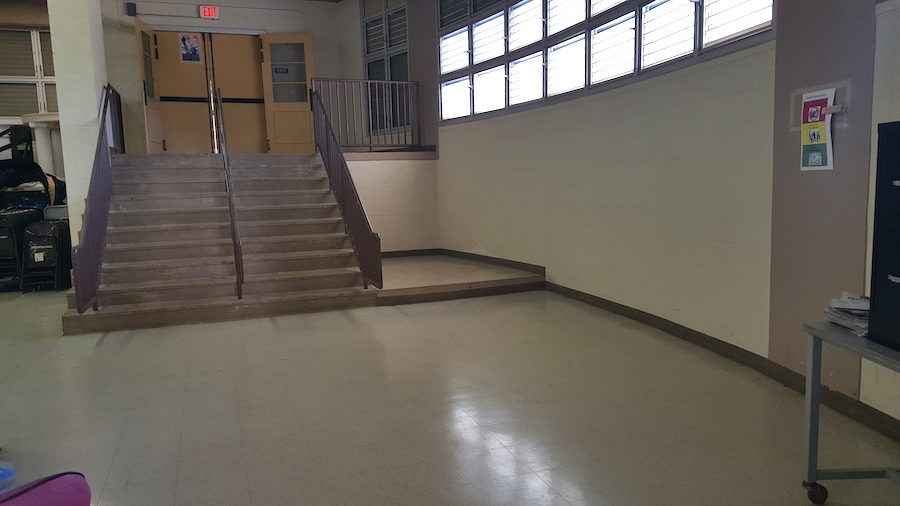Students lose out to lock out
This is where lock out students report and wait till the end of their lockout period.
The issue of tardies has long been a challenge for NHIS. In 2015-16 school year, the middle school used lunch detention as a consequence for tardies and the high school implemented a new system called “lockout” for their students. These procedures continue this school year.
Students in lockout face a unique punishment.
The lockout tardy procedure works by security rounding up any student who is not in class after the tardy bell rings. Teachers are instructed to close their doors and not allow any students to come in after the tardy bell rings. The students who are locked out then report to the multi-purpose cafeteria where they sign in and grab a folding chair to sit on.
Students in lockout are in there for the whole period and are required to follow the four lockout expectations. 1) Turn off all electronics. 2) Take off headgear and glasses. 3) No toys/games. 4) There is no sleeping or putting your head down. If any of these are brought out in lockout it will be confiscated and parents/guardians will have to report to school to have item returned.
“Lockout did make a difference within a couple of weeks of being reinforced that tardies dropped to almost 40 (2015) and at this current year (2016) it’s almost down to like 20 or less. You can say lockout did make a difference” said Ryan Matsumoto, Science Teacher.
“What I was told from my coach is that before lock-out, kids were just hanging outside the classrooms and just coming in right after the bell and what lock-out has done is change that so that kids don’t do that anymore, they try to get to class,” said David Kaniaupio, US History teacher.
However, many students feel that the lockout is not beneficial.
“We come to school to learn, not waste away our education. The office should just give out tardy slips so we can get our education and graduate on time.” Said Kystassia Glover, sophomore.
“I personally have a dislike for it nor do I think it’s useful at all. I agree that it is very time consuming and I’m wondering why lock out was created in the first place” said Jasmine Kamana’o, sophomore.
The lock-out is not only affecting NHIS students but also affecting neighboring schools.
“We were informed that the neighboring elementary schools are encountering NHIS students hanging around as they wait for the bell to ring and then go on campus to beat the lockout” said Robin Kitsu, NPAC director.
“So while the data may show that the lockout rate has gone down it may be because students are not allowing themselves to be caught,” said Kitsu.
Overall, lockout is a process which is continuously evolving each day.
“Last year you had tables and this year you don’t. You sit on the folding chair after your fourth time here in lockout, you lose your chair and you stand up the whole period or you sit on the floor.” said Antonette Kunakawa, Lockout Clerk.
“They [students] have to use better judgement in getting to class on time. You do have seven minutes to get to class. It’s just depending where they are, knowing where your classes are,” said Kunakawa.


